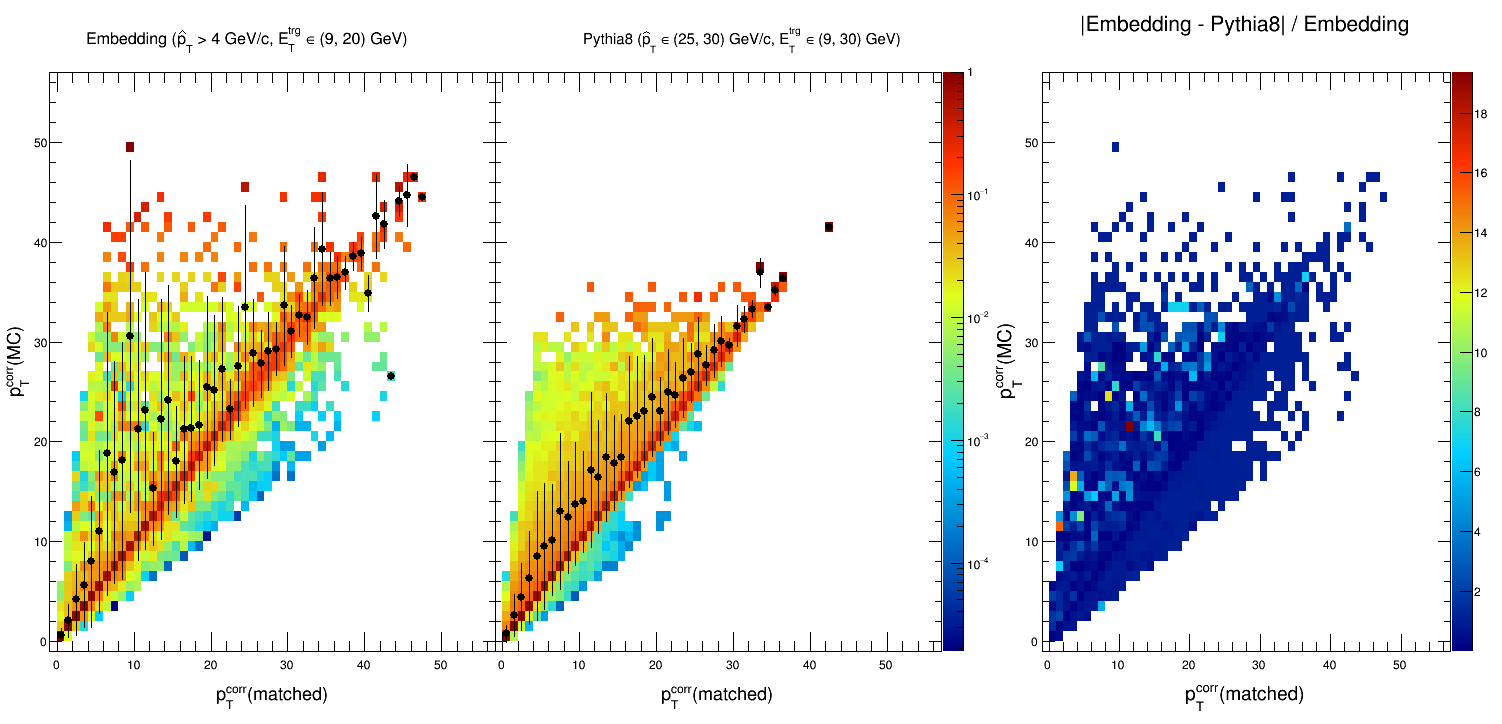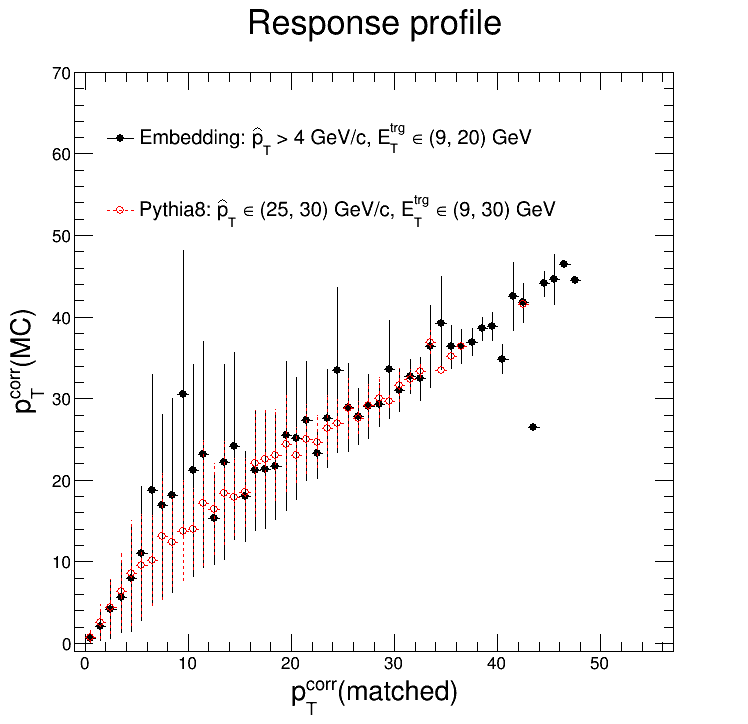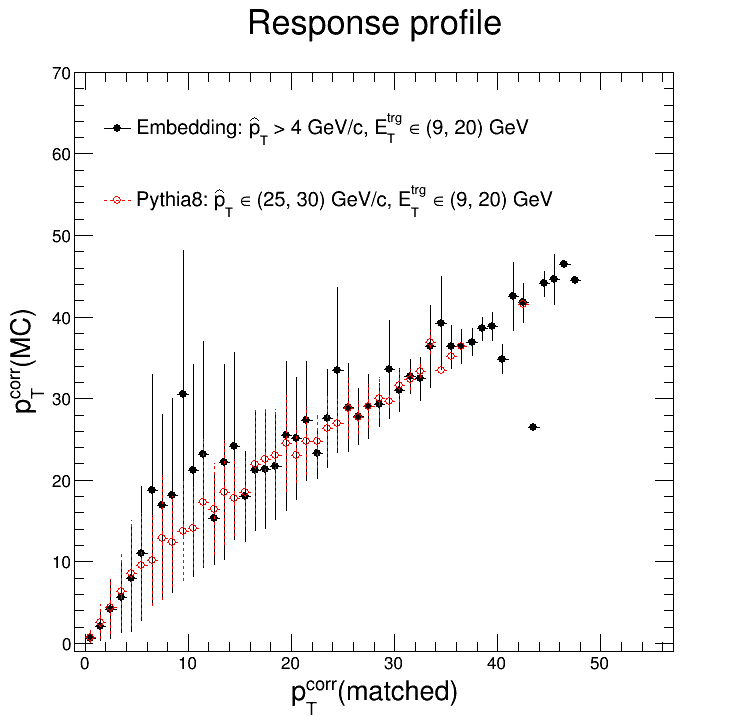Update 08.26.2019 -- Run 9 pp: Pythia8 vs. Pythia6 Response Matrices With PtHat = (25, 30) GeV/c in Pythia8
Previously, I noticed that the reach of the response matrix (both in pTpar and pTdet) was substantially smaller in our Pythia8 sample than in our Pythia6 sample:
I speculated that this is the source of the inconsistency between using Pythia8 vs. using Pythia6 to unfold our data. The first question to answer is: how does changing pThatMin affect the range of pTjet? Shown here is the generated response matrix from Pythia8 for pThat = (25, 30) GeV/c compared against our usual Pythia6 response matrix:


And sure enough, it does! While the Pythia8 response matrix in the link above cuts off around pTjet ~ 20 GeV/c this one extends out to pTjet ~ 30 GeV/c. Now, you might notice that the eTtrg range on the Pythia8 response here is eTtrg = (9, 30) GeV/c. So is it a consequence of the trigger range? The plots below show the same comparison, but the Pythia8 eTtrg range has been restricted to eTtrg = (9, 20) GeV/c:


And the extent is still the same! So adjusting pThatMin does indeed improve the comparison of the response matrices. The embedding sample (Pythia6) was split up into separate bins of pThat during production; hence it has roughly even contributions from all ranges of pThat. However, our initial Pythia8 production just stipulated that pThat > 4 GeV/c which means we were overwhelmingly dominated by low pThat events.
The next checks are to compare a few more bins ptHat in Pythia8 to Pythia6 -- just to be extra sure that it is pThat that is adjusting the extent of the response matrix -- and then to try unfolding with the higher pThat samples of Pythia8 and see how they compare to using Pythia6.
- dmawxc's blog
- Login or register to post comments
